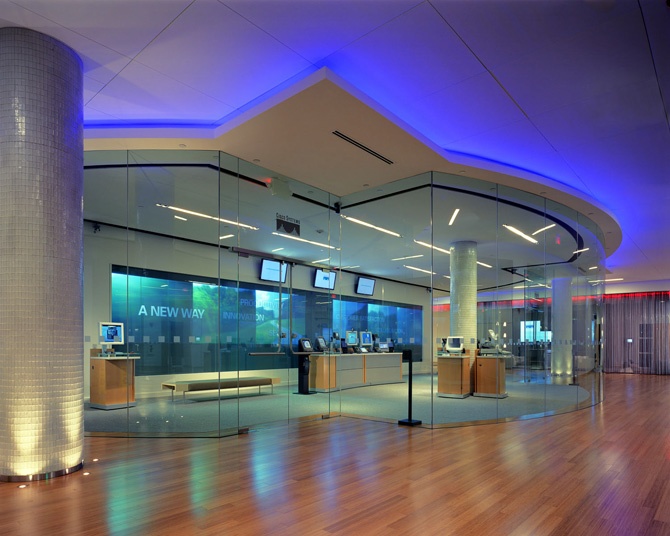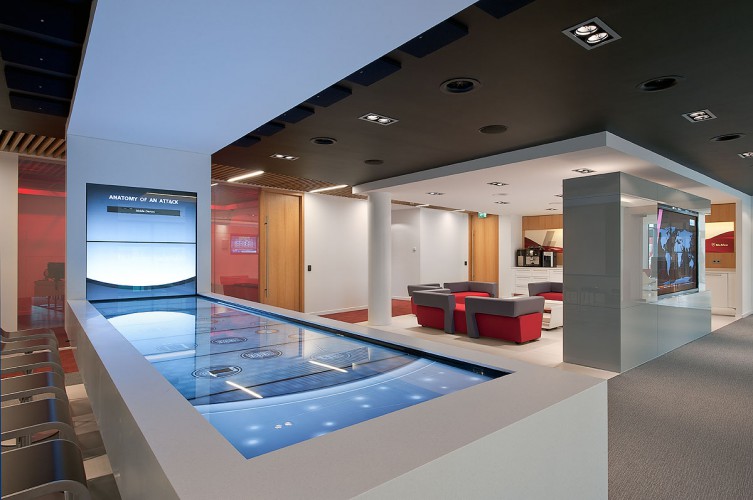The world’s biggest companies use their Briefing centers to show off their latest wares, to bedazzle their customers, and make them buy into the company’s vision. It’s an arena for planned persuasion, and each Executive Briefing Center is a company’s pride and joy.
What is a briefing center anyway?

A Briefing center is a facility where a company showcases their products and offerings, opening the doors for further communication on the sales process. It is a great place to give the customer a controlled and ideal experience while exploring opportunities to strengthen their partnership. This is where they bring their customers to listen to them, and help them make an informed decision about how the product or service can help meet the customers’ goals.
Should your company invest in an EBC?
Building an EBC is not a cheap undertaking – the costs are considerable.
The decision to build an EBC should be informed by the perceived ROI. An EBC is capable of converting prospects faster, and instilling confidence in current customers which increases their LTV (Lifetime Value). An EBC is a decision that needs to be made based on the current and projected sales pipeline for the company. The Briefing Center fits into a company’s sales strategy based on how it can influence the pipeline, and this is what you should focus on while deciding if the EBC is a good fit for your organization.
Bragging rights, one-upping the competition, being suddenly flush with funds and wanting to drop it on a great vanity project all definitely seem like strong reasons to build an EBC. But these reasons are not enough to ensure the longevity of the center, because anything that does not quantifiably add value to the company’s bottom line will be removed from the expense columns.
So how do you calculate ROI from a Briefing center?
The high initial cost of the briefing center gets amortized by its impact on the sales pipeline. You’ll need to calculate how the briefing center influences the sales cycle of a company, by contrasting the sales cycle of a similar prospect/customer who didn’t visit the briefing center. This showcases the role of the briefing center in advancing sales, such as the time taken to close deals, executives involved in the sales process (the hierarchies and the volume of executives), number of touchpoints and so on.

To do all this, each briefing visit needs to be connected to a pre-approved agenda, and its success should be measured by whether the briefing goals were met. The agenda can be anything from introducing and acquaint a new product to an existing customer, addressing their concerns with personalized presentations, or just straight out dazzling them with an amazing experience that gets them to sign that paper.
Challenges in managing a Briefing Center
The challenges start right from getting visibility into the calendars of internal attendees, and updating all of them on the agenda for the briefing. An absent attendee can delay the progress of the deal considerably. Also, everyone needs to be on the same page about the purpose of the visit, so that they can stick to their customer acquisition strategy, and move the deal forward in a systematic way. After the briefing, the data from the visit needs to be tracked and reported, so that the ROI can be accurately calculated.
Finding the right tool
Briefing center management has largely remained a manual process, with managers juggling between spreadsheets and email clients. This is needlessly complex, leaving more room for errors while taking up valuable time of the briefing managers. If you’d like to explore an option that makes managing interactions at Briefing Centers simple, schedule a free demo now!



